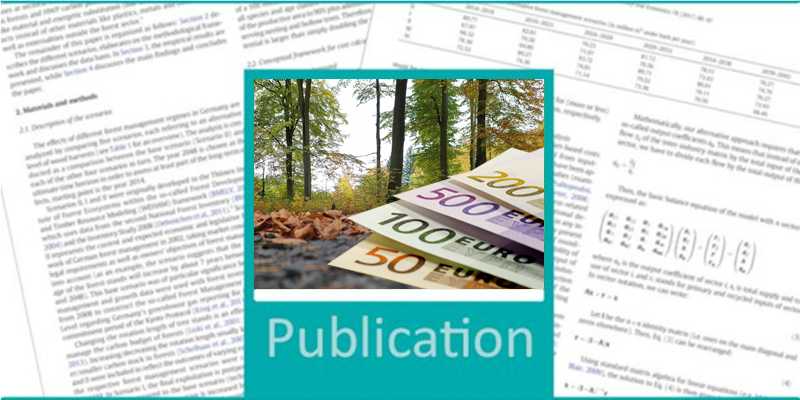The acceptance of these instruments is influenced by forest owners’ but also by the instruments’ characteristics. As the latter can be formed by policy actors they are of particular interest. The article identifies preference orders of German forest owners regarding characteristics of funding instruments for nature protection-related measures by applying a paired comparison approach (PC) to survey data. The aim of a PC is to order a set of objects according to their relative preference for the interviewees.
In the present study, respondents were asked to imagine a future funding instrument for ‘forest conversion’ one the one hand and for ‘maintenance of old-growth and habitat trees’ on the other. The attributes to be compared for these instruments were: a shorter commitment period, a more flexible measure implementation, a higher amount of funding, a lower repayment risk and a lower administrative burden than today.
The analysis of the data followed two approaches. In the first approach a preference order was calculated for each of the two measures. For the measure ‘forest conversion’ the most preferred attribute is flexibility, followed by reduced paperwork and a higher amount of funding. For ‘maintenance of old-growth and habitat trees’ the most preferred attribute is a higher amount of funding, followed by more flexibility and reduced paperwork. Lower repayment risk and a shorter commitment period than today are at the end of the preference scale for both measures. The second approach integrates subject specific variables. The perception of risk within the current funding procedure has an influence on the preference order for both measures: A higher preference for a lower repayment risk is accompanied with a lower preference of a higher payment amount.
The sampling design of the survey prevents representative statements about all German forest owners. However, the results provide orientation as to which parameters are essential for better accepted funding schemes for forest nature conservation.
- Franz K (2021) How can forest funding instruments be designed so that they are accepted by forest owners? Allg Forst Jagdzeitg 191(7/8):129-142, DOI:10.23765/afjz0002064




![[Translate to English:] Logo des Bundesministerium für Ernährung und Landwirtschaft](/media/allgemein/logos/BMEL_Logo.svg)